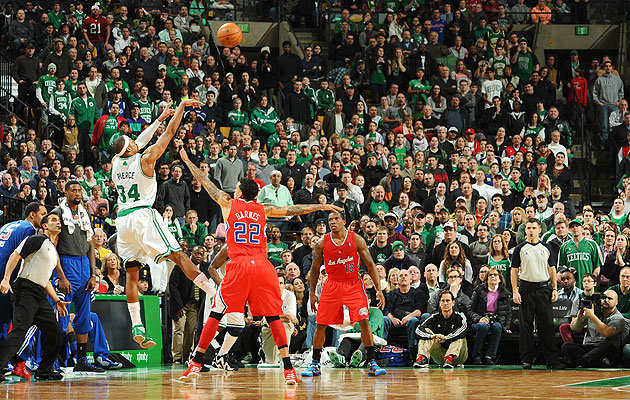
Teaching Players to Adapt to Different Playing Styles: Developing Versatile Skills, Game IQ, and Tactical Flexibility
In basketball, the ability to adapt to various playing styles is essential for achieving success against diverse opponents. Each team has its unique approach, whether it’s a fast-paced offense, a deliberate defensive strategy, or a specific style of play.
As a coach, teaching your players to effectively adapt to different playing styles can significantly enhance their versatility and overall performance. This article explores strategies and techniques for helping players adjust to varying styles of play.

1. Understanding Different Playing Styles
Before players can adapt to different styles, they need to understand what those styles entail. Familiarize your team with common playing styles and their characteristics.
Fast-Paced Offense
Teams that employ a fast-paced offense prioritize quick transitions, rapid ball movement, and constant pressure on the defense. They often rely on speed and agility to create scoring opportunities.
- Characteristics: Quick passes, frequent cuts, and an emphasis on getting shots off before the defense can set up.
Half-Court Offense
Teams with a half-court offense focus on setting up plays and executing precise movements within the half-court setting. They emphasize ball control, spacing, and patience.
- Characteristics: Slow, methodical play with a focus on positioning and executing designed plays to create open shots.
Aggressive Defense
An aggressive defensive team applies constant pressure, using full-court presses, traps, and intense man-to-man or zone defenses to disrupt the opponent’s offense.
- Characteristics: High-pressure defense that aims to create turnovers and force bad shots.
Patient Defense
Teams with a patient defense prioritize solid positioning and discipline, aiming to force opponents into taking difficult shots and minimizing scoring opportunities.
- Characteristics: Focus on maintaining a strong defensive stance, staying disciplined, and making the offense work for every shot.
Understanding these styles is crucial for players to anticipate opponents’ strategies and adjust their gameplay accordingly.

2. Teaching Adaptability Through Practice Drills
Incorporate drills into your practice sessions that help players develop the skills necessary to adapt to various playing styles. These drills should focus on versatility and quick decision-making.
Scrimmages with Style Variations
Organize scrimmages where one team adopts a specific playing style while the other team adjusts accordingly. For example, have one team implement a full-court press while the other team practices breaking it effectively.
- Objective: Encourage players to think critically about how to adjust their strategies based on the style they are facing.
Style-Specific Drills
Design drills that simulate different playing styles. For instance, practice fast-break drills to prepare for quick offenses or run half-court sets to improve adaptability against deliberate offenses.
- Example Drills:
- Fast-Break Drill: Have players practice transitioning quickly from defense to offense, focusing on making quick decisions on whom to pass to and when to shoot.
- Half-Court Offense Drill: Work on executing set plays and moving without the ball to create open shots.
Scenario-Based Drills
Create scenarios where players must respond to different defensive and offensive strategies. This helps players practice adapting to various situations in a controlled environment.
- Example: Set up a drill where the defense is allowed to switch between man-to-man and zone coverage, forcing the offense to adjust accordingly.
3. Analyzing Opponents’ Styles
Effective adaptation begins with a thorough understanding of opponents’ playing styles. Teach your players how to analyze and prepare for different styles.
Pre-Game Scouting
Review game footage of opponents to identify their playing style and key tendencies. Focus on their offensive and defensive strategies, and note any specific patterns or plays they frequently use.
- Action Plan: Create a scouting report that outlines the opponent’s strengths, weaknesses, and preferred playing styles. Share this with your players in advance of the game.
Opponent Analysis Sessions
Conduct team meetings to discuss the opponent’s style and how to counteract it. Break down their key strategies and outline how your team can adjust to exploit their weaknesses.
- Discussion Points:
- What specific plays does the opponent run?
- How do they typically defend certain offensive strategies?
- What adjustments should we make to our game plan?
Strategy Adjustments
Develop game plans that incorporate strategies for countering different styles. Ensure that players understand their roles and responsibilities based on the opponent’s approach.
- Example: If facing a fast-paced team, focus on defensive transition and ensuring players are ready to get back quickly after a shot.

4. Fostering Versatility in Players
Encourage players to develop a versatile skill set that allows them to adapt to various playing styles. Focus on improving their overall basketball IQ and skill set.
Skill Development
Work on fundamental skills such as dribbling, passing, shooting, and defense. Versatile skills enable players to adjust their play based on the style of the opponent and the demands of the game.
- Training Focus: Ensure that players are comfortable executing skills with both hands, which will be essential against teams that may pressure them differently.
Basketball IQ
Enhance players’ understanding of different playing styles and their implications. Teach them to recognize patterns, anticipate opponents’ moves, and make quick decisions on the court.
- Situational Awareness: Conduct drills where players have to make decisions based on how the defense is set up, helping them to develop a quick understanding of game situations.
Role Flexibility
Encourage players to embrace different roles on the court. Players who are comfortable playing multiple positions and roles can adapt more easily to various styles and strategies.
- Example: Train players to be familiar with both guard and forward roles, allowing them to adjust to whatever is needed for the game.
5. Communication and Team Coordination
Effective communication and team coordination are essential for adapting to different playing styles. Foster strong communication among players to ensure seamless adjustments during the game.
In-Game Communication
Emphasize the importance of clear and effective communication on the court. Players should be able to quickly convey information about defensive assignments, offensive strategies, and adjustments.
- Callouts: Encourage players to call out screens, switches, and plays to ensure everyone is on the same page.
Role Clarity
Ensure that each player understands their role and responsibilities based on the current playing style. Clear role definitions help players make necessary adjustments and contribute effectively to the team’s strategy.
- Role Assignments: Before each game, clearly outline what is expected from each player and how their role may change based on the opponent’s style.
Team Chemistry
Build team chemistry through team-building activities and practices. Strong team bonds and understanding contribute to better coordination and adaptability.
- Team Activities: Organize off-court bonding activities, such as team dinners or outings, to strengthen relationships and improve on-court communication.

6. Adapting During Games
In-game adjustments are crucial for responding to changes in the opponent’s playing style. Teach players how to adapt effectively during the game.
Quick Adjustments
Train players to make quick adjustments based on changes in the opponent’s style or game situations. Encourage them to stay alert and be ready to adapt their play as needed.
- Game Situations: Regularly practice situational plays where players must adapt their strategy based on how the game unfolds.
Coaching Cues
Provide clear coaching cues and adjustments during timeouts and breaks. Help players understand how to modify their approach to counter the opponent’s strategies.
- Real-Time Feedback: Use timeouts to address observations from the first half of the game and adjust the strategy accordingly.
Mental Toughness
Develop mental toughness in players to handle the pressure of adapting to different styles. Encourage resilience and a positive mindset in the face of challenges.
- Mindset Training: Incorporate mental conditioning exercises, such as visualization and relaxation techniques, into practices to help players stay focused under pressure.

7. Review and Reflection
Post-game reviews are essential for evaluating how well players adapted to different playing styles. Use these reviews to identify areas for improvement and reinforce successful strategies.
Game Analysis
Analyze game footage to assess how well players adapted to different styles. Review key moments where adjustments were made and discuss their effectiveness.
- Key Moments: Identify successful adaptations and analyze what worked well versus what didn’t, ensuring players understand the reasoning behind their actions.
Feedback Sessions
Hold feedback sessions with players to discuss their performance and adaptability. Provide constructive feedback and highlight areas where they successfully adjusted to different styles.
- Open Dialogue: Foster an environment where players feel comfortable discussing their thoughts on the game, allowing for collective learning and improvement.
Continuous Improvement
Use insights from game reviews to refine practice drills and strategies. Focus on areas that need improvement and continue to develop players’ adaptability.
- Progress Tracking: Regularly track players’ growth in adaptability and use this information to inform future practices and drills.
Teaching Players to Adapt to Different Playing Styles Conclusion:
Teaching players to adapt to different playing styles requires a combination of understanding, practice, and effective communication.
By familiarizing players with various styles, incorporating adaptability drills, analyzing opponents, fostering versatility, and emphasizing in-game adjustments, you can enhance your team’s ability to respond to diverse challenges.
Implementing these strategies will help your players become more versatile and better prepared for any opponent they face.



